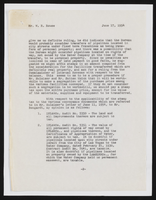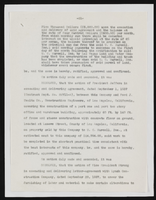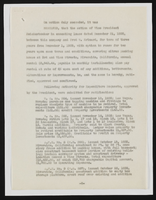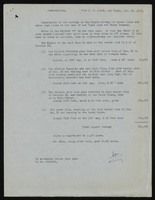Search the Special Collections and Archives Portal
Search Results

Telegram from Walter R. Bracken (Las Vegas) to J. P. Mack (Los Angeles), March 11, 1939
Date
Archival Collection
Description
Walter Bracken urging the Union Pacific Railroad Company that serious maintenance needs to be made to a wooden pipeline which was leaking badly in numerous places with summer quickly approaching.
Text

Telegram from Walter R. Bracken (Las Vegas) to J. P. Mack (Los Angeles), June 10, 1939
Date
Archival Collection
Description
Walter Bracken urging the Union Pacific Railroad to pay serious attention to maintaining a wooden pipeline, which was leaking badly in numerous places in summer. The reservoir level was at seven feet and falling.
Text

Telegram from Walter R. Bracken (Las Vegas) to J. P. Mack (Los Angeles), June 12, 1939
Date
Archival Collection
Description
Telegram informing that the Las Vegas Land and Water Company crew repaired 108 holes in their main pipeline and gained a foot of water in the reservoir overnight.
Text

Letter from E. E. Cunningham (Yermo, Cal.) to J. P. Mack, November 27, 1930
Date
Archival Collection
Description
Discussion of selling water to people living next to the Arden Pipeline, provided they were not using the water to manufacture moonshine.
Text

Letter from F. H. Knickerbocker (Los Angeles) to Walter R. Bracken (Las Vegas), August 26, 1930
Date
Archival Collection
Description
Letter outlining the procedure for a one-time purchase of bulk drinking water on the St. Thomas line.
Text

Letter from W. R. Armstrong (Los Angeles) to E. E. Cunningham, June 19, 1930
Date
Archival Collection
Description
The sale of drinking water to the residents of the Moapa Valley were on a case by case basis.
Text




